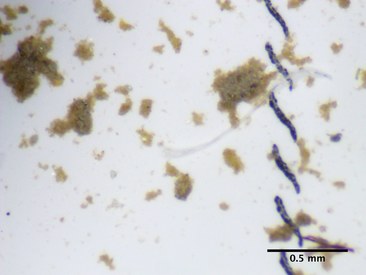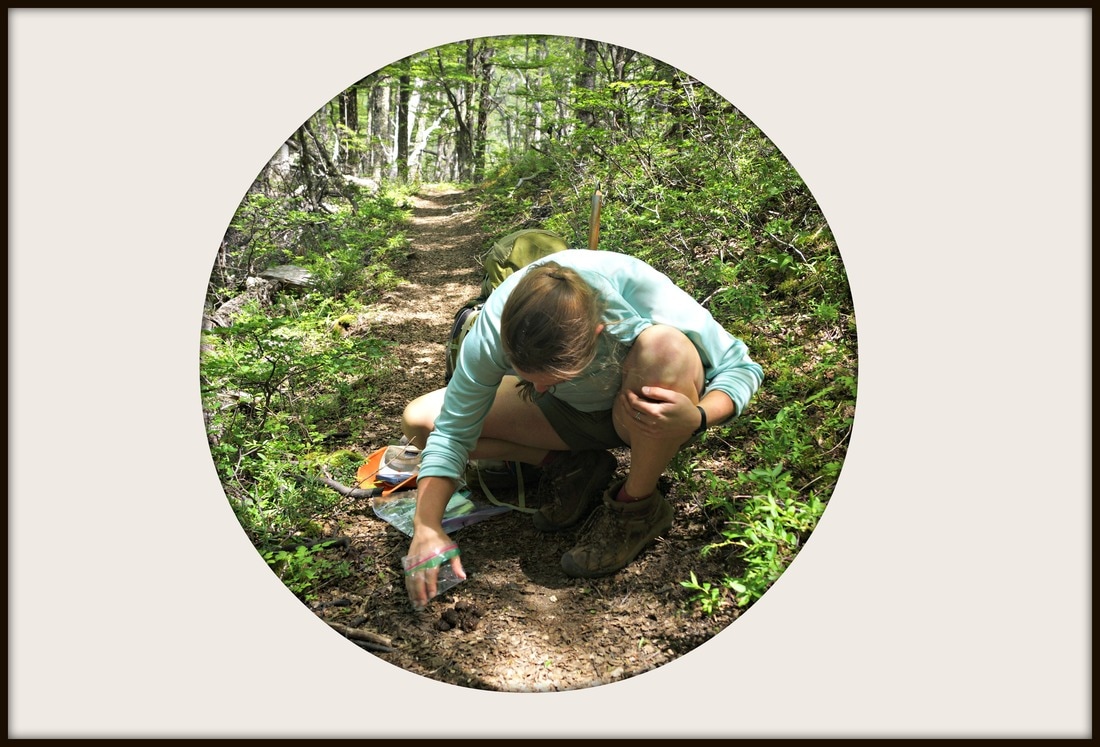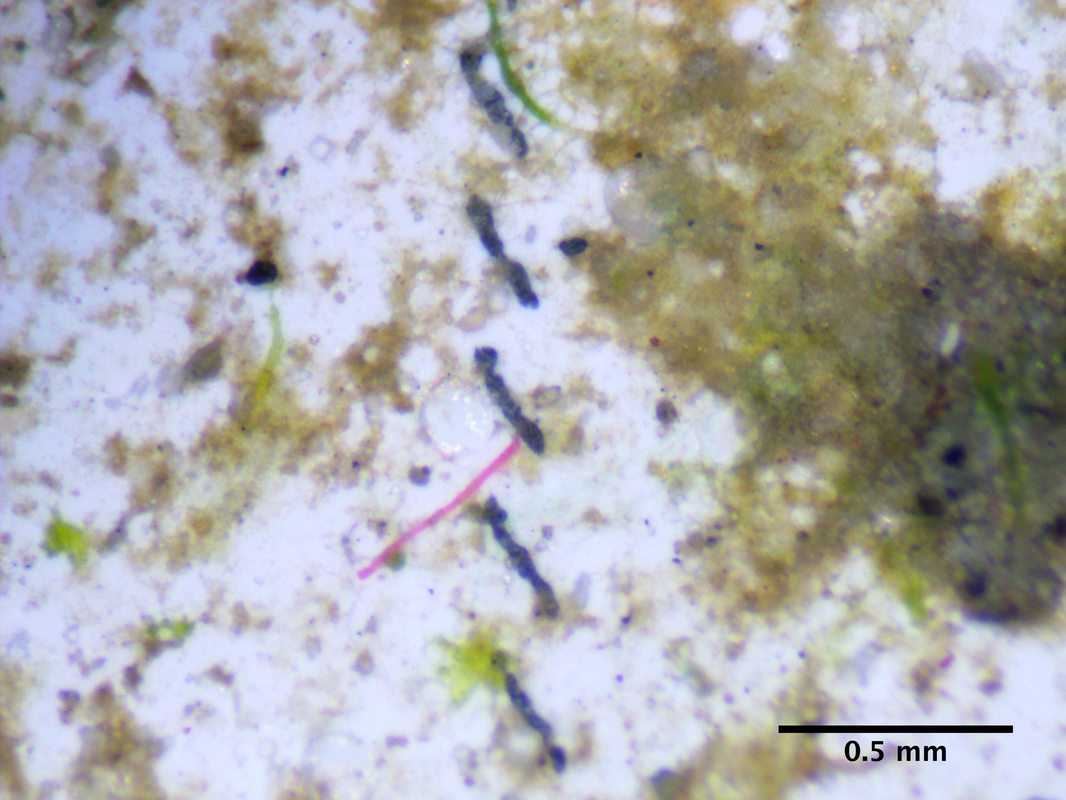Thank you for collecting water samples with the Adventure Scientists’ Global Microplastics Initiative. Your efforts are helping us understand the distribution and concentration of microplastics in the world’s waters, while also building the one of the largest microplastics dataset ever. Principal Investigator Abby Barrows has processed your microplastics samples, and we’re excited to share the results of your work!
Lab Process
First, let us briefly explain the process your samples go through in the lab. Once Abby receives your sample, she vacuum pumps each sample over a filter. After the filter has dried, Abby uses a microscope at 45x magnification to look for pieces of microplastic that are less than 5 millimeters. Moving along the grid lines, the filter is systematically counted, with each plastic piece categorized based on shape (round, microfiber, other) and color (blue, red, black, transparent/white, other). The final count for the sample is divided by the sample volume. This calculation helps to standardize the results, as incoming water samples are often not exactly one liter of water.
To date, 1755 of 2342 samples analyzed (74%) contained microplastics. 86% of marine samples contained plastic, while 49% of freshwater samples contained plastic. 24,666 pieces of microplastic have been counted. On average, we are finding about 9 plastic pieces per liter of water. You can check out the number of pieces per liter in each individual sample on the map on our microplastics page.
Note: In the results listed here, we report the total microplastic pieces found in all of your samples. However, for many of our calculations and for the online map, we report the total pieces per liter. As such, your microplastic total on the map may appear different from your total below.
Also, please let us know if your sample isn’t located in the correct place on the map, so that we can fix it for you.
Kiyoko Yokota, Rafael Olan, Jr., Blair O’Brien, Jaime Rinaldi, Emily Manley, Janine Clark, Richelle Cemo, Sydney O’Gorman, and Silas Sleeper
Japan
Kiyoko, Rafael, Blair, Jaime, Emily, Janine, Richelle, Sydney, and Silas collected three samples, which didn’t contain microplastics. Kiyoko led a team of undergraduates from SUNY Oneonta and Hunter College. Together, they collected marine water samples in Japan while studying abroad.
Lauren de Remer, Simon Lucas, and Mikal Jakubal
Zambia
Lauren, Simon, and Mikal collected one sample, which contained one blue microfiber, one red microfiber, and one black microfiber. The crew rafted the Zambezi River beginning at Victoria Falls (a UNESCO World Heritage site) as part of a film project about the river, which is currently facing a dam threat. Lauren is an avid whitewater rafter and guide, and has previously collected marine samples for the Global Microplastics project during a sailing expedition from Panama to the Galapagos. Stay tuned – we’ll soon be featuring a blog by Lauren about this adventure.
Laura Belichak
Albion, CA
Laura collected one marine sample during her camping trip near the Albion River, which contained one red microfiber and one clear microfiber. Laura is a sailor, surfer, and passionate environmentalist, and has worked on a river restoration on the Albion River mouth.
Stuart Caswell and Vicki Richmond
Missouri River
Stuart and Vicki collected one sample, which contained one red film and one white microbead. Stuart is a naturalist and collects water samples for The Lakes of Missouri Volunteer Program. He has four sites and seven locations in which he monitors macroinvertebrates and basic water chemistry. He is also a board member of Healthy Rivers Partnership, and section leader for the annual Blue River Rescue project (which had 1,200 volunteers covering 22 miles of river and recovered 12 tons of trash and 900 tires).
 Clear microplastic fiber from sample 1.
Clear microplastic fiber from sample 1.
Ciaran and Fergus Barry, and Chris Whitworth
United Kingdom
Ciaran collected nine marine samples during her kayak adventures, which contained nine pieces of microplastic: one blue film, one red film, two clear microfibers, one blue and clear fragment, two black microfibers, one red microfiber, and one red and clear microfiber. Ciaran is a recent university graduate and serves as the head beach ranger for a local conservation trust on the west coast of the UK. Chris is the chair of the marine conservation group. Fergus (brother of Ciaran) helped collect samples from his kayak.
Juliana Beecher, Josh Bossin, and Marissa Bieger
Chile
Juliana, Josh, and Marissa collected two samples on their trekking and climbing trip in Chile, which didn’t contain any microplastic. Juliana works seasonally around the US as a baker and lighting designer. Josh is a grad student in outdoor education at Ohio University. He is a NOLS instructor and avid ice climber. Marissa is also a NOLS instructor and coffee connoisseur.

Mary and Nathan Jett
Michigan
Mary and Nathan collected two samples, which contained one blue microfiber. Mary is a retired packaging material researcher. Nathan (Mary’s son) is a US Marine based in Japan.
Ten Mile Range River
Jerome New
Colorado
Jerome collected one sample, which didn’t contain any microplastic. Jerome is a certified SARtechII through NASAR, and a NOLS graduate who enjoys backpacking and backcountry snowboarding.
Though we’re finding an average of 9 pieces per liter for the project overall, there is much more microplastic in marine samples than freshwater samples. The concentration of microplastic in marine samples is over 12 pieces per liter. This is much greater than the concentration in freshwater samples, which is about 1 piece per liter.
Another interesting trend we’re seeing is 90% of the microplastic we’ve counted is fibrous: the pieces are thread-like or line shaped. Finding a majority of these fibers in samples could suggest that microfibers are the primary microplastic input into waterways.
Thanks so much, again, for your dedication to this program and our shared waterways!

